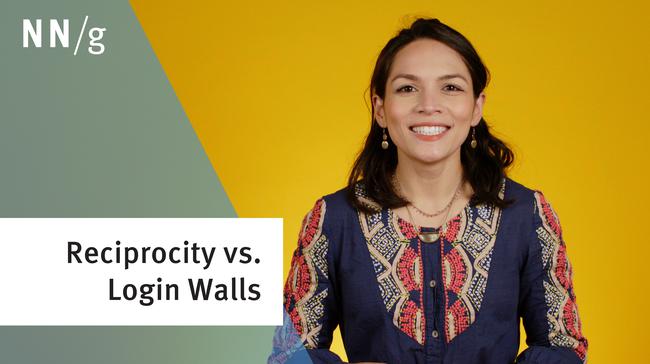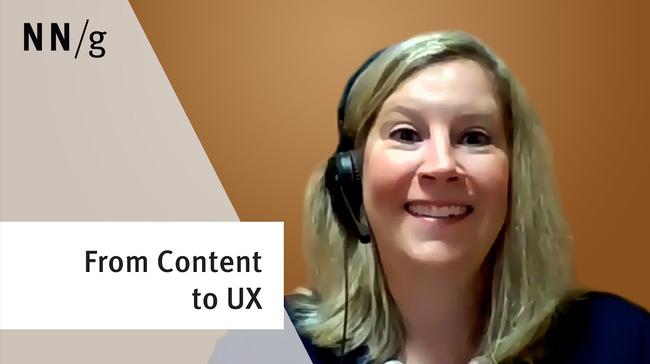At first glance, search engine optimization (SEO) and usability seem to be quite distinct topics:
- SEO is about attracting people to your site in the first place by making sure it shows up in search queries.
- Usability is about people's behavior after they arrive on your site, with the main goal being to increase the conversion rate.
Basically, SEO happens before the first click, and usability takes over from there. Both need to be good for a website to succeed. Having great SEO but lousy usability means that you'll get lots of traffic, but the visitors won't turn into customers. Conversely, a site with great usability but lousy SEO simply won't get many visitors, so it doesn't really matter how good it is.
Although they focus on different phases of the lead-generation funnel, there are many ways in which SEO and usability support each other and a few ways in which they conflict.
SEO Is More Important Than You Think
SEO's basic importance arises from the fact that most users exhibit strong search dominance — that is, search is the main way people go places on the Internet. Even more important, search is the main resource discovery strategy for most people.
Yes, social media also supports resource discovery, but such services are biased in favor of frivolous content and thus less powerful for more "serious" sites like B2B, financial services, medical/pharmaceutical, and government sites.
Email newsletters are certainly unsurpassed in enticing people back to your site — but search is usually how they found the site in the first place.
Search goes far beyond simply "placing high in Google" (or whatever the leading search engine will be in the future):
- Intranets. Just because employees are using an internal company information space doesn't mean they change their main information-seeking behaviors. Indeed, our research with intranet users shows the immense importance of intranet search. Sadly, the research also shows that intranet search tends to be dramatically worse than web-wide search, even though it should be easier to search a smaller space.
- E-commerce product search. The first law of e-commerce? If the customer cannot find a product then the customer cannot buy the product. There are many special usability guidelines for product search, which should be much more sophisticated than what's currently offered.
- Onsite search for mainstream websites. Once users arrive at your site, they often turn to its site-specific search engine to shortcut navigation. Again, however, site search is often shockingly bad, and we frequently we hear test users utter the dreaded words: "I'll give up on this search and go to Google instead."
In all of these cases, usability would be vastly enhanced if the intranet or website employed basic SEO techniques to ensure that the most important pages related to user queries showed up high in the search listings.
Long-Term SEO = Well-Served Users
A search engine's ultimate goal is to help users find the best solutions to their problems. Search engines are really answer engines — the answer is the goal, and the query is the means to achieve it.
This again means that high SERP placement will eventually be determined by how well each site supports users in performing their tasks. Search engines currently must guess at each site's quality using indirect signals, such as how many other sites link to it. But as search engine companies increasingly snoop on user behaviors, the search results rankings increasingly will be based on usability criteria. The ability to collect more valid quality signals is certainly a reason for big search engines to sprawl beyond their profit center and offer loss-leading services.
In today's environment, you can still gain some SERP rank by playing to the search engine algorithms and trying to game the scoring system. However, this is a losing proposition long term because the algorithms constantly change. Focusing on providing a high-quality service is more likely to generate sustainable high rankings.
Short-Term SEO Mostly Implies Good Design
Although using short-term tricks to cheat the search algorithms is a bad idea, it's certainly reasonable to design websites (and intranets, etc.) to work well with today's search engines. But the main guidelines for doing so are really things you should be doing anyway:
- Offer stable URLs so other sites can link directly to each key piece of content. (Although it's been 14 years since I first warned against linkrot, it's still common and definitely kills a site's chance in the search game.) Permalinks should be permanent.
- Speak the user's language in page titles, headlines, and body text. As long as search is mainly based on keyword matching, it's essential to write in the same vocabulary that people use in their queries. Again, there's nothing new here: being plain-spoken and avoiding "cute" headlines or made-up words have long been the main guidelines for writing for the Web.
- Accessibility. I used to call Googlebot "the world's richest blind user" because it could understand only text and couldn't see images. As search engines exploit more AI techniques and pattern recognition, they're gaining a rudimentary understanding of pictorial information, but plain text is still the safest way to get indexed.
- Offer a clear information architecture (IA). The IA should have a designated main page for each item of interest and a clear navigation system that points to these pages so that search engines can deduce their central status.
- Attract incoming links and social chatter by presenting compelling content and frequent updates.
Following these dual usability/SEO guidelines will increase your SERP rankings. But more important, it will also increase your clickthroughs (and thus your business). Users have a strong tendency to click the #1 search hit, but don't always do so. Why not? Usually because the first listing's page title or description doesn't follow usability guidelines and instead is cute, generalized, or misleading. People don't click links with poor information scent.
Conflicts between SEO and Usability
Mostly, SEO and usability reinforce each other. But sometimes the two conflict. For example, keyword stuffing definitely undermines the user experience and makes pages harder to read.
Vocabulary choice can also present conflicts: the keywords that are entered most often in queries can sometimes be more difficult to understand — particularly for low-literacy users — than simpler terms.
As another example, fat footers can greatly increase usability for people who arrive at the end of a page without finding what they want. Fat footers also strengthen structural SEO by guiding link juice to the site's best pages about each key topic. All for the good; in fact, fat footers have now become so common that we've moved our discussion of them from our Emerging Patterns for Web Design course to our seminar on proven best practices for Web Page Design.
Sadly, some people can't let a good thing alone, and we've started seeing obese footers that stuff every link known to humankind into the page bottoms. The theory? It's good for SEO to feed the search engines an abundance of keyword-rich links. The reality? It's bad for users when you offer a link collection so big that it's impossible to scan quickly.
There are two general approaches for handling conflicts between SEO and usability:
- Short-term: make the tradeoff between more traffic (from better SEO) and higher conversion rates (from better usability). The decision should come down to where you suffer the most — and thus need to improve the most.
- Long-term: as discussed above, you'll ultimately get more search traffic from better usability, even if you don't squeeze every last drop from the SEO-trick lemon.




Share this article: